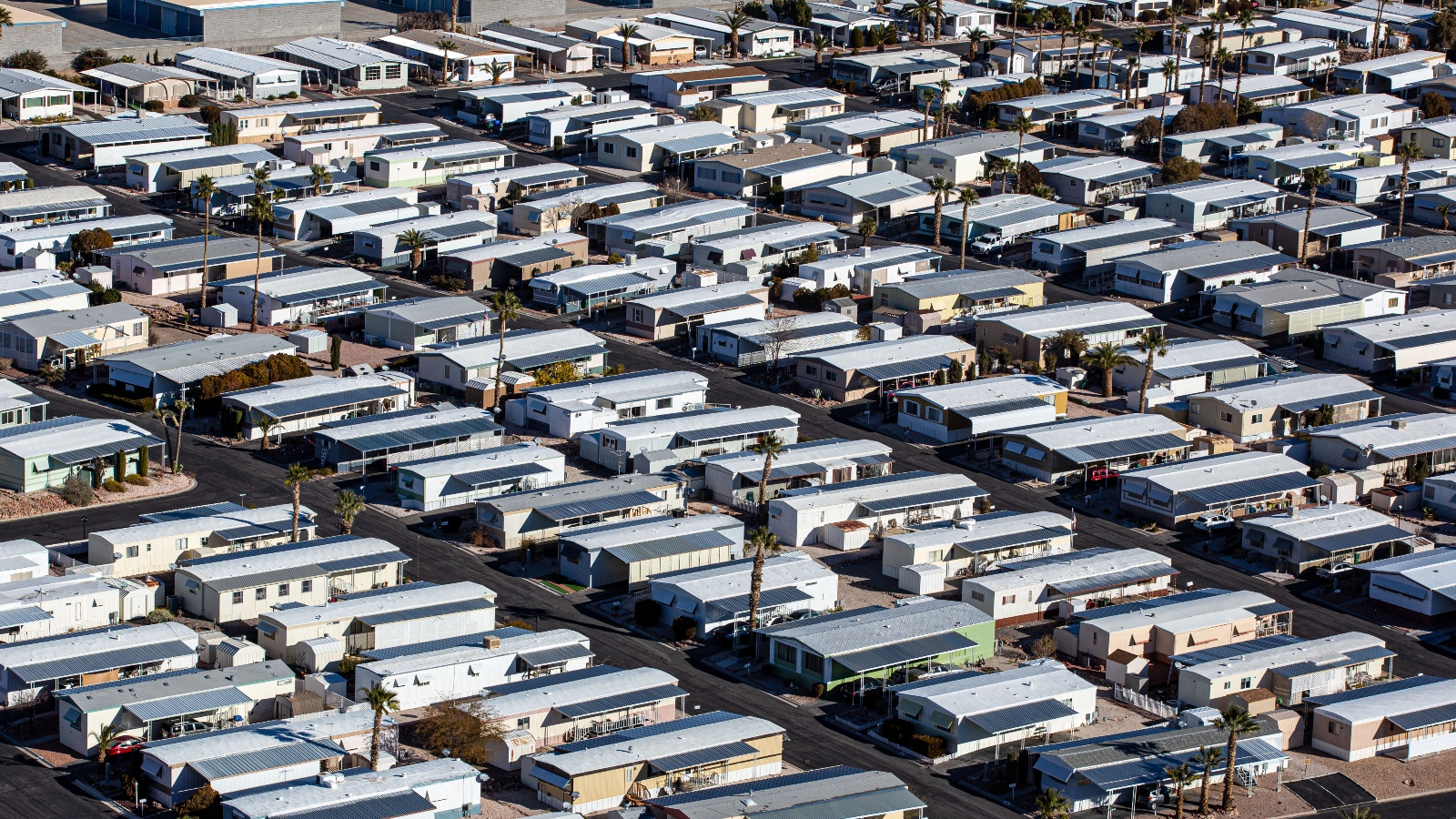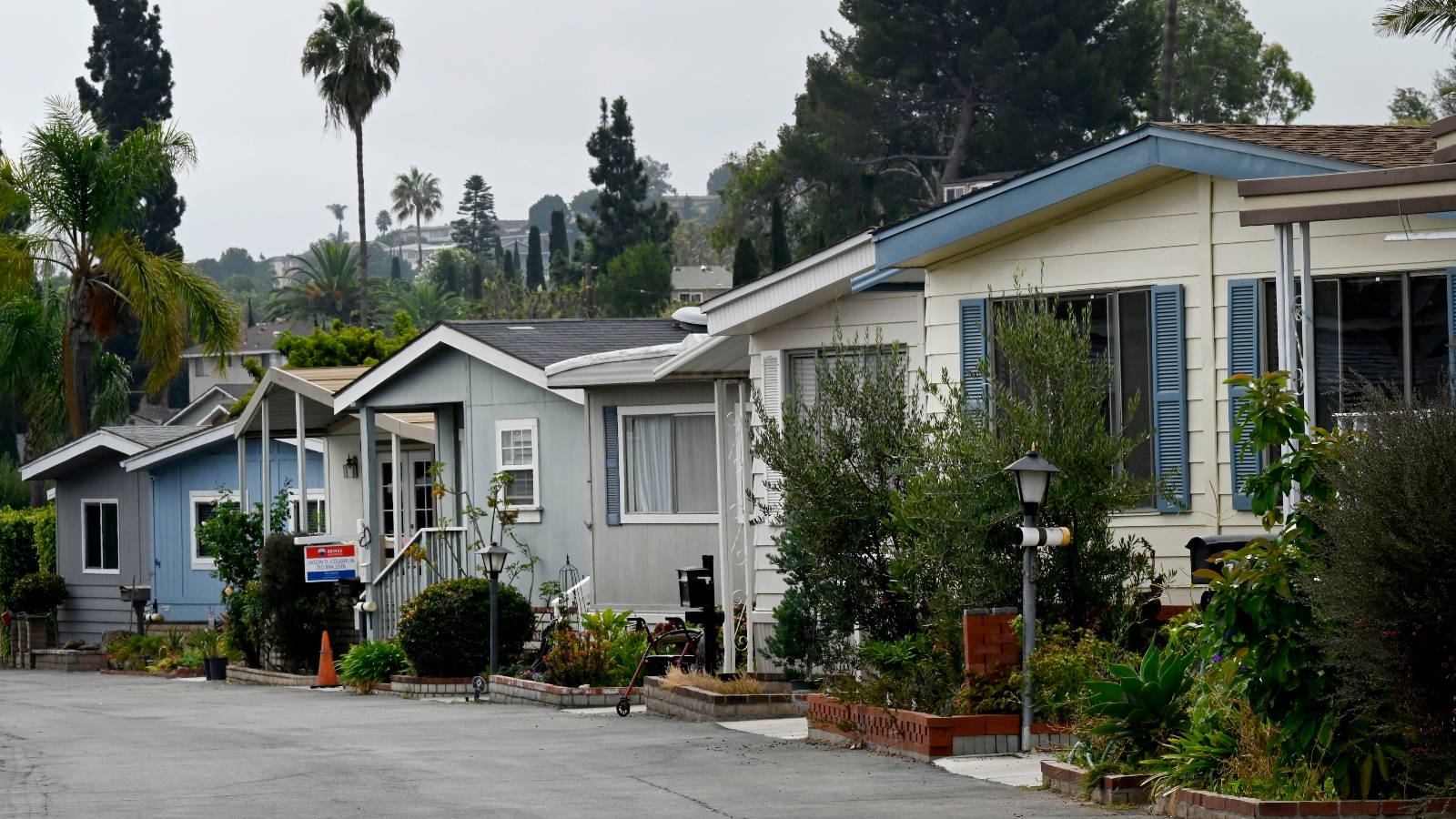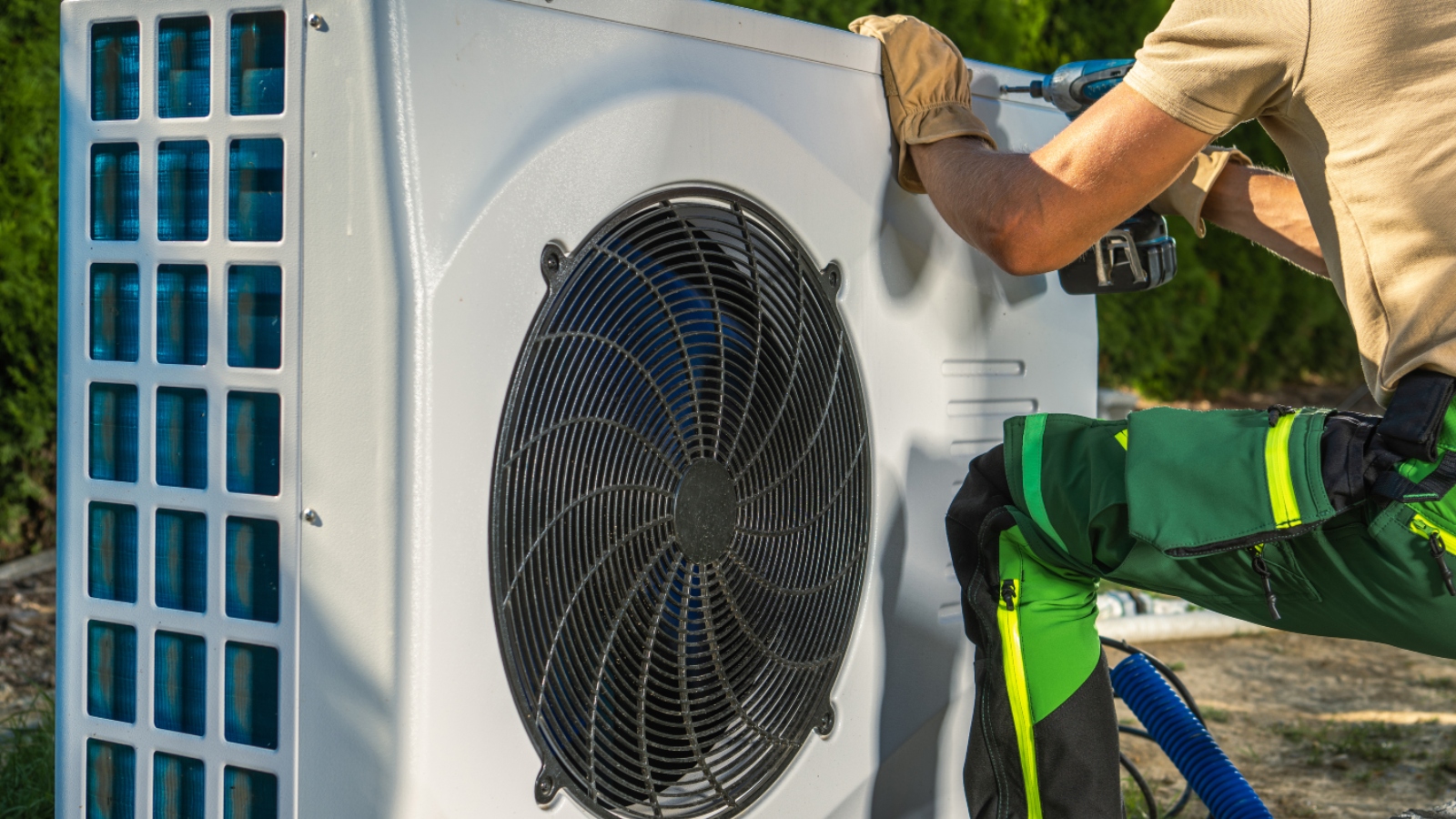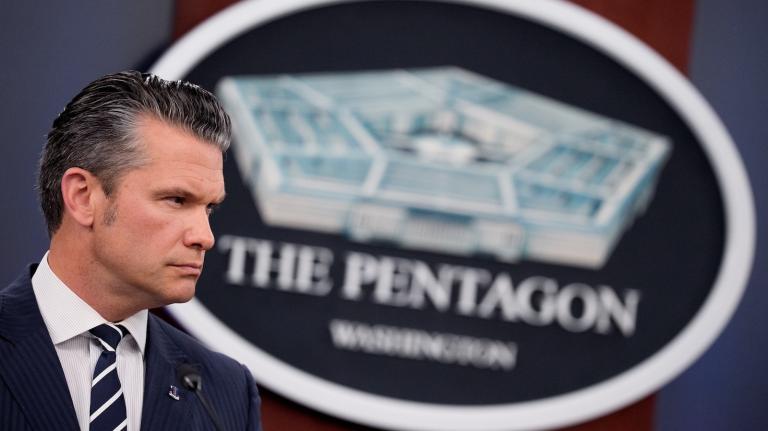This story was supported by the Economic Hardship Reporting Project.
About 22 million Americans live in mobile homes or manufactured housing, according to the U.S. Census Bureau, and as the housing crisis continues to worsen in places like Arizona, California, and New York, that number could go up.
But for some, mobile homes conjure up an image of rusting metal units in weed-choked lots, an unfair stereotype that has real consequences — advocates argue that mobile homes are not only a housing fix but could also help with the climate crisis.
According to Andrew Rumbach, a senior fellow at the Urban Institute, mobile homes are a good solution with a bad reputation.
It’s unfair, he said, because the residents of mobile homes are often hampered by restrictive zoning laws that make it hard to upgrade maintenance and care of the structures. These zoning laws also have put communities at risk for climate-related disasters, which explains why so many mobile home parks are in floodplains.
“It’s not the home itself that often makes mobile homes vulnerable,” said Rumbach. “It’s actually the fact that we sort of stuck the poor away in these places that makes them vulnerable.”
A report by the Niskanen Center, a nonprofit public policy organization, echoes Rumbach’s research. The report found that mobile homes have consistently been an affordable and underutilized solution that meets the housing needs of low- and moderate-income people.
Newer models can also be a low-carbon solution as these prefabricated homes, which are built in large pieces for easy assembly, can include things like heat pumps and solar panels, in contrast to older models that relied on propane or natural gas. Older models can also be eligible for retrofits to make them more energy efficient and climate-friendly.
“They’re a pretty terrific solution,” said Rumbach. “Unfortunately, by law, in many places in the country [mobile homes] are not allowed to be placed anymore because there is such a cultural stigma.”
The Eastern Coachella Valley in California is one place where mobile home parks and residents have been consistently overlooked by public officials. People in the majority Latino area grapple with getting access to necessities like electricity and clean water. Arsenic was found in the water supply and is a persistent issue.
But despite that, there is also an incredible sense of community among the residents of informal mobile home parks in the area, according to Jovana Morales-Tilgren, a housing policy coordinator at Leadership Council for Justice and Accountability, a California nonprofit focusing on underserved rural communities.
The parks were originally built for migrant farmworkers and today they operate without a permit, which means federal agencies and local governments don’t have official recognition that they exist. So if there’s a disaster, that makes it harder to get federal relief, and if there is a municipal upgrade, it doesn’t happen in those communities.
“They do have a lot more issues than regular mobile home parks,” said Morales-Tilgren. “Many of them don’t have weatherization, insulation. Many were built more than 20, 30, 40 years ago. And so they do have a lot of issues.”

Mobile homes can be roughly categorized into two sections: older homes that predate the Department of Housing and Urban Development’s rules in 1976, and newer, prefabricated homes that often are greener, more efficient, and better functioning than some traditional homes.
When Tropical Storm Hilary hit Southern California last month, residents in the unpermitted mobile home parks were trapped, because a power outage meant that residents had to sleep in their cars to get access to air conditioning.
“[Mobile homes] are not equipped to handle those extreme weather events,” said Morales-Tilgren.
This is especially an issue because a large portion of people that live in the area are low-income people of color who are undocumented, according to Morales-Tilgren. Consequently, people lack access to resources needed to recover from large flooding events like the kind that Hilary brought.
Another key issue: Mobile home parks, both permitted and unpermitted, are reliant on their own infrastructure. In other types of housing, such as apartments or single family homes, a municipality is usually in charge of providing electricity, water, sewage, and tree maintenance. But in mobile home parks, residents are reliant on owners to provide those services.
In addition, once extreme weather happens, residents are often caught in the grip of the confusing bureaucracy of the Federal Emergency Management Agency, or FEMA. While mobile home parks can vary wildly, the main distinction that the agency makes is whether or not people own or rent the land underneath the home.
A 2021 study published in the journal Frontiers found that there are numerous barriers to accessing resources, such as money from FEMA, for vulnerable populations in the wake of a flood-related disaster. Affordable housing units were affected more, and often the number of units did not bounce back to pre-disaster levels.
Additionally, mobile home residents are often at risk of being evicted in the aftermath of disasters that might displace them from their homes. This can fuel housing instability because mobile homes tend to be located in climate-vulnerable areas like floodplains, according to Rumbach.
“Around the country, you see a disproportionate amount of mobile homes located in hazardous areas,” said Rumbach. “The demand is being driven by a segment of the housing market that’s looking for lower costs. And as a result, you see a lot of manufactured housing being placed into relatively climate-vulnerable places, because that land tends to be a little bit less valuable.”
On the other side of the country, though, mobile home owners in Ithaca, New York, have been the beneficiaries of a pilot project aimed at retrofitting mobile homes in the area to be more climate-friendly.
This first-of-its-kind project is giving owners funding for heat pumps to replace the polluting natural gas or propane furnaces needed to heat mobile homes. The program also provides money to cover the cost of insulation needed to keep the heating and cooling provided by electric appliances in the home and reduce electric bills.
Gay Nicholson, president of Sustainable Finger Lakes, a nonprofit focused on climate solutions in upstate New York, says that while their program, which is ongoing, has so far been successful in helping people access funding, they still are limited in their reach. The program would need more money as well as guidance from state and federal authorities to be able to meet the needs of everyone who applied.
Nicholson said that currently, the program is trying to help people transition off of natural gas, which is available cheaply despite its destructive climate impacts. This often puts the onus on consumers to be able to invest in climate-friendly technology, if no additional funding is available.
Cost is a vital aspect of upgrading mobile homes: “It affects how people make decisions,” said Nicholson. “Whether or not they’re going to stay on gas and stick to another cheap gas furnace.”
Stigma surrounding mobile home parks is a huge reason for issues regarding resource allocation and zoning issues. Additionally, some of the most pressing issues come from a common problem for almost all mobile home residents: They’re just not considered.
In Ithaca, that means many transmission lines that service mobile home parks are capped at a certain wattage that is far below what it would take to electrify them, which provides challenges for Nicholson.
“There are no incentives set up by the state or the feds to help to pay a mobile home park owner to upgrade the electrical capacity of his park,” said Nicholson. “We’re way behind schedule for electrification.”
Back in California, in the Eastern Coachella Valley, this means that not only did Tropical Storm Hilary flood mobile home parks but that the roads were closed — further isolating residents. In this case, as in others such as in Texas in 2021, large-scale efforts to avoid the impacts of a disaster such as a hurricane or a cold snap do not consider mobile home residents and owners.
This is a problem, according to Zachary Lamb, a professor at the college of environmental design at the University of California, Berkeley, because not being considered makes it difficult to be resilient to climate change.
“Mobile home parks are disproportionately located in parts of landscapes that are vulnerable to climate risks,” said Lamb. “So they’re disproportionately located in floodplains. They’re disproportionately located in places that are exposed to extreme heat. …They’re also disproportionately located in places that are close to other environmental harms.”
Despite those vulnerabilities, past research shows that in areas where marginalized communities live, people can and do come together to solve issues collaboratively. This makes one of the most misunderstood forms of housing a good place to invest in, according to Lamb.
“Making investments in climate resilience, that is such a no-brainer,” said Lamb. “In terms of both improving the infrastructure quality, and also in terms of giving residents more agency and more control over their communities.”





